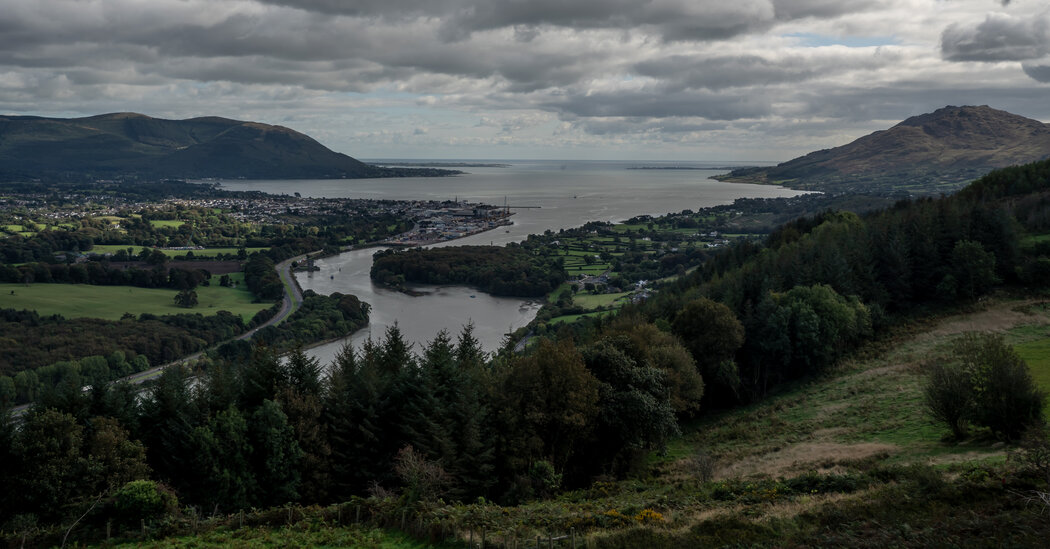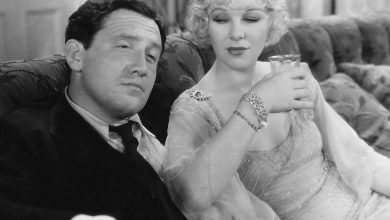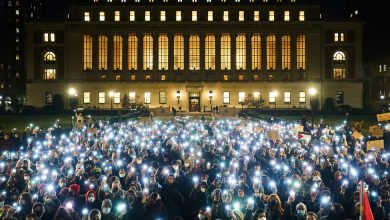
What’s at Stake as U.K. and E.U. Reach Deal Over Northern Ireland Protocol
LONDON — Boris Johnson’s victory in the 2019 race to become prime minister was attributed in part to his campaign slogan: “Get Brexit done.” More than three years later, one of his successors, Rishi Sunak, took a significant step toward making good on that pledge.
The British government and the European Commission, the European Union’s executive arm, have reached an agreement intended to resolve one of the thorniest legacies of Britain’s withdrawal from the bloc: the trade status of Northern Ireland.
The new agreement, which has been named the “Windsor Framework,” includes a series of new measures to what is known as the Northern Ireland protocol that both sides hope will resolve the challenges that went unaddressed in earlier deals.
Northern Ireland is part of the United Kingdom, but it shares a land border with Ireland, a member of the European Union — the bloc that the United Kingdom has left. That has created a sticking point for successive British prime ministers ever since Brexit was approved in 2016.
Negotiators had long struggled to find a way to allow goods to move smoothly between Northern Ireland and the rest of the United Kingdom, without threatening the open border between Northern Ireland and Ireland. That border has a significance that goes far beyond trade.
The stakes were high. Some in Brussels spoke of a threat to the integrity of the European Union’s single economic market; some in London and Belfast warned of a threat to the coherence of the United Kingdom; and there were concerns about the fragility of peace in a region where decades of sectarian violence left several thousand dead.
The initial result was the Northern Ireland protocol, but there was unhappiness with it from almost the moment it took effect in 2021, and the renegotiated deal attempts to resolve at least some of those concerns.
President Biden had made clear that he wanted a new agreement before celebrations in April for the 25th anniversary of the Good Friday Agreement, which helped end decades of bloodshed in Northern Ireland known as the Troubles.
Here’s what to know.
What is the Northern Ireland protocol?
While the accord sounds like the title of a spy thriller, it’s actually a dry legal text that won’t be found on most people’s vacation reading lists.
The frontier between Northern Ireland and Ireland is contested, and parts of it were fortified during the decades of violence known as the Troubles. But customs checks on the island ended after both Britain and Ireland joined the forerunner of the European Union, and other signs of division that remained along the open border have faded since the Good Friday peace deal of 1998.
No one wants checkpoints back, but when Britain left the European Union, Mr. Johnson insisted on leaving its customs union and its single market, which allows goods to flow freely across European borders.
The original protocol set out a plan to deal with this situation. It did so by effectively leaving Northern Ireland half inside the European system (and its giant market), and half inside the British one. It sounded neat — until everyone tried to make it work.
The withdrawal agreement came into effect at the start of 2021, but there were complaints from all sides — Britain, the European Union, Ireland and Northern Ireland.
Why didn’t Britain like the original protocol?
The plan meant more checks on goods entering Northern Ireland from mainland Britain, effectively creating a border down the Irish Sea and dividing the United Kingdom. Some British companies stopped supplying stores in Northern Ireland, blaming the added paperwork.
That enraged some lawmakers in Mr. Johnson’s Conservative Party and inflamed sentiment in Northern Ireland, where some objected to anything that would effectively set the region apart from the rest of the United Kingdom (for the sake of comparison, they might argue, it would be as though new trade rules required border checks for goods sent to California from the rest of the United States).
Some Brexit supporters also saw the protocol as a means for the European Union to retain power over a part of the United Kingdom — a suspicion reflected in Britain’s desire to remove any role in the region for the European Court of Justice, the bloc’s top court.
To many of Northern Ireland’s pro-British unionists, many of whom are Protestant, it feels as if their identity is under threat.
As a result, Mr. Sunak had to tread carefully. His grip on his party is shaky, with pro-Brexit hard-liners within his Conservative Party skeptical about whether he had won enough concessions, a sentiment shared by members of the Democratic Unionist Party in Northern Ireland.
Some, in fact, wanted him to stick with a proposed law, which has already passed several stages of parliamentary approval, that would give his government the right to overrule parts of the protocol unilaterally.
That left Mr. Sunak with little room to maneuver: He had to be mindful of setting off a rebellion from his own lawmakers, or resignations from members of his cabinet, while also being cognizant that angering the European Union could possibly lead to a trade war.
Analysts say that Mr. Sunak, as prime minister, would not have to bring the agreement to a vote because what is being negotiated are changes to the operation of a treaty rather than its substance.
However, responding to calls for lawmakers to have their say, Mr. Sunak said Parliament would get a chance to vote on the new deal, a move designed to underscore its political legitimacy.
Why was the E.U. taking a hard line?
The bloc initially dug in its heels, not only because Mr. Johnson accepted the protocol, but also because he negotiated it and pushed it through the British Parliament.
With Mr. Johnson now out of power, the European Union seemed more willing to engage with Mr. Sunak, who has tried hard to build bridges.
Officials in Brussels accepted that the protocol has its flaws, but there was only so far they were willing to go, because E.U. leaders believed that the bloc’s existential interests are at risk. If Brussels can’t control what enters its single market, they argue, it could threaten the building blocks of European integration.
Was anyone in Northern Ireland satisfied with the protocol?
Yes. After the most recent elections for the regional government in Northern Ireland, in May, the majority of lawmakers now represent parties that largely want to keep the protocol, albeit with some improvements. That’s because the protocol was designed to prevent the reintroduction of checks on goods at the politically sensitive land border between Northern Ireland and Ireland.
A return of border checks would likely destabilize the peace process — which is underpinned by the Good Friday Agreement and has, among other things, allowed the border to remain open even after Brexit. It would particularly upset Sinn Fein, the biggest party after the recent election.
As a party that campaigns for Irish unity, it is hostile to any structures that appear to divide the island.
Some companies in Northern Ireland also benefited from the original protocol, because it allowed them sell their goods across Europe’s huge internal market as well as exporting to mainland Britain.
What does the new agreement look like?
Although some Unionist politicians in Northern Ireland wanted to rip up the protocol completely, that was never going to happen. Instead, the British government looked for ways to reduce the bureaucracy and to lower trade barriers for exporters to Northern Ireland, all of which were laid out in the Windsor framework announced on Monday.
Although the full details of the deal are still sparse, one key change announced by Mr. Sunak and Ms. von der Leyen is the introduction of “green” and “red” lanes for goods arriving in Northern Ireland.
There will be no routine controls on goods passing through a “green” lane designed for trusted traders whose products will not travel beyond Northern Ireland. The “red” lane is intended for goods destined for Ireland — within Europe’s single market — that will be checked.
Mr. Sunak said the agreement would not eliminate the role of the European Court of Justice, the bloc’s top judicial authority, in determining trade disputes, but he said the deal would give Northern Ireland’s politicians an “emergency brake” for any new or updated European legislation.
Mr. Sunak said the new measure would give lawmakers in the devolved regional government in Northern Ireland “a powerful new safeguard based on cross-community consent.” He also said that the agreement would prevent allow the British government — and not the European Union — to decide key VAT and excise measures in Northern Ireland, for example on alcohol duty.
Monika Pronczuk contributed reporting from Brussels.




